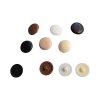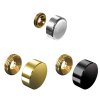BrokenEnglishGuy
Major Contributor
- Joined
- Jul 19, 2020
- Messages
- 2,110
- Likes
- 1,268
yeah he said '' aside from the drivers '', i also thinked that. But i don't know why write that and then '' aside from the drivers '' xD
yeah he said '' aside from the drivers '', i also thinked that. But i don't know why write that and then '' aside from the drivers '' xD
Now compare that with these KEFs at the same (to higher) price range as the Ascends:yeah he said '' aside from the drivers '', i also thinked that. But i don't know why write that and then '' aside from the drivers '' xD
Those Heco speakers you posted pictures of are awful. Look terrible. The chrome is so tacky. Garish. Trashy.yeah he said '' aside from the drivers '', i also thinked that. But i don't know why write that and then '' aside from the drivers '' xD
I mean it's okay to have incorrect aesthetic taste but... we are talking more about craftsmanship quality rather than aesthetics hahahaThose Heco speakers you posted pictures of are awful. Look terrible. The chrome is so tacky. Garish. Trashy.
My point wasn’t to be a dick. Just to show we all have different taste.I mean it's okay to have incorrect aesthetic taste but... we are talking more about craftsmanship quality rather than aesthetics hahaha
No, they produce a minimum diffraction that doesn't matter but objectively is better to not have these screwDetails like exposed screws are even subjective.
That's perfectly fine with me. That's probably, vast majority of the speakers out there.This ones?
View attachment 359001
I see 4 screws in each driver and that's what I'm talking about,that's what these rings I posted above are for.
Or is it another version?
Given that the wavelength of higher frequency sounds that can be heard by a human are 2-3 cm long, how can mounting screws for the drivers, which may have irregularities on the fasteners for the screwdriver on the order of mere millimeters have any diffraction effects that are audible? But perhaps they can. I need to study diffraction I guess. I will look into this. Thanks.No, they produce a minimum diffraction that doesn't matter but objectively is better to not have these screw
No, but the subjective opinion might.It really irrelevant which order this is done in... the measurements are not going to change.
JSmith
Just to be clear, i said '' doesnt matter but obj is better to not have ''Given that the wavelength of higher frequency sounds that can be heard by a human are 2-3 cm long, how can mounting screws for the drivers, which may have irregularities on the fasteners for the screwdriver on the order of mere millimeters have any diffraction effects that are audible? But perhaps they can. I need to study diffraction I guess. I will look into this. Thanks.
I would go for the big boys in a heartbeat.
Given that the wavelength of higher frequency sounds that can be heard by a human are 2-3 cm long, how can mounting screws for the drivers, which may have irregularities on the fasteners for the screwdriver on the order of mere millimeters have any diffraction effects that are audible?.
But the purpose is not subjective opinion without basis, it's to correlate the measurements with listening. Hence why this is done in mono... here's a vid Amir did which may clear up a few things for some;No, but the subjective opinion might.
So some screw heads might have a little bit of effect if they are not flush with the surface or nearly so,
Oh,there are ready made ones for repackaging,no need for hacks:I’m surprised there is not a suitable expensive audio tweak for such things, perhaps a nano gel (repackaged bathroom mastic) to fill in screw heads on speakers


Woofer or mid surrounds usually are not protruding much more than those 4 mm but still their effect is measurable both on-axis due to the symmetry as well off-axis which is one of the reasons many try to eliminate that issue with flat surrounds. Of course with screws heads it will be even less and probably not audible but still measurable.In order for an object to significantly affect a soundwave it needs to big enough to do so, and "big enough to do so" turns out to be a minimum of 1/4 wavelength. A 20 kHz soundwave is about 17 millimeters long, so anything less than 4.25 millimeters across is going be effectively invisible at 20 kHz.
And that was my conclusion too, when I bought the Seas DXT tweeter. It might look nicer, and you can measure it, but it won't be audibly noticeable:Woofer or mid surrounds usually are not protruding much more than those 4 mm but still their effect is measurable both on-axis due to the symmetry as well off-axis which is one of the reasons many try to eliminate that issue with flat surrounds. Of course with screws heads it will be even less and probably not audible but still measurable.
